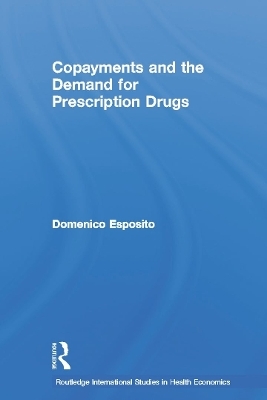
Copayments and the Demand for Prescription Drugs
Seiten
2006
Routledge (Verlag)
978-0-415-70145-7 (ISBN)
Routledge (Verlag)
978-0-415-70145-7 (ISBN)
The increasing proliferation of copayments is one of the most striking recent developments in the health sector. As debate over their nature and implementation rages on, this volume examines the influence of copayments on the choice of drugs.
Increasing prescription drug cost-sharing by patients - in the form of increasing copayments - is one of the most striking, and controversial, developments in the health sector over recent years. The exact nature and use of copayments by health care insurers continues to be hot topic of debate.
This detailed and meticulously researched study is one of the first of its kind: its results suggest that differences in copayments influence choice, shifting market share for these drugs. Differential copayments for medically equivalent alternatives is one strategy insurers use to affect the choice of one drug over another when faced with differing prices. Relative copayments for therapeutically equivalent drugs, imposed by insurers, are shown to have a significant impact on consumer choice – the implication being that physicians are acting in patients’ financial, as well as medical interest.
Unlike much work in this area, Copayments and the Demand for Prescription Drugs is not sponsored by any drug company; and its up-to-date results, established on a firm scientific basis, are entirely unbiased. Its results have applications for the private insurance and pharmaceutical sectors as well as the public sector, and it will be of great interest to professionals and researchers in the fields of health economics, economic and healthcare policy-making, and microeconomics: its primary findings are especially critical to the United States public health sector which is on the cusp of providing a prescription drug benefit to nearly forty million elderly Americans.
Increasing prescription drug cost-sharing by patients - in the form of increasing copayments - is one of the most striking, and controversial, developments in the health sector over recent years. The exact nature and use of copayments by health care insurers continues to be hot topic of debate.
This detailed and meticulously researched study is one of the first of its kind: its results suggest that differences in copayments influence choice, shifting market share for these drugs. Differential copayments for medically equivalent alternatives is one strategy insurers use to affect the choice of one drug over another when faced with differing prices. Relative copayments for therapeutically equivalent drugs, imposed by insurers, are shown to have a significant impact on consumer choice – the implication being that physicians are acting in patients’ financial, as well as medical interest.
Unlike much work in this area, Copayments and the Demand for Prescription Drugs is not sponsored by any drug company; and its up-to-date results, established on a firm scientific basis, are entirely unbiased. Its results have applications for the private insurance and pharmaceutical sectors as well as the public sector, and it will be of great interest to professionals and researchers in the fields of health economics, economic and healthcare policy-making, and microeconomics: its primary findings are especially critical to the United States public health sector which is on the cusp of providing a prescription drug benefit to nearly forty million elderly Americans.
Domenico Esposito
1. Introduction 2. Literature on the Demand for Prescription Drugs 3. Coronary Heart Disease and Statins 4. Economic Differentiation of Statins 5. The Structure of Demand for Prescription Drugs 6. The Economics of Drug Demand 7. Econometric Specification of Prescription Drug Choice 8. Data 9. Descriptive Statistics 10. Multivariate Regression Results 11. Multivariate Sensitivity Analyses 12. Extensions 13. Policy Implications and Conclusions
| Erscheint lt. Verlag | 23.3.2006 |
|---|---|
| Reihe/Serie | Routledge International Studies in Health Economics |
| Zusatzinfo | 97 Tables, black and white; 4 Illustrations, black and white |
| Verlagsort | London |
| Sprache | englisch |
| Maße | 156 x 234 mm |
| Gewicht | 450 g |
| Themenwelt | Sachbuch/Ratgeber ► Gesundheit / Leben / Psychologie |
| Medizin / Pharmazie ► Gesundheitswesen | |
| Studium ► Querschnittsbereiche ► Prävention / Gesundheitsförderung | |
| Sozialwissenschaften ► Soziologie | |
| Wirtschaft ► Volkswirtschaftslehre ► Mikroökonomie | |
| ISBN-10 | 0-415-70145-7 / 0415701457 |
| ISBN-13 | 978-0-415-70145-7 / 9780415701457 |
| Zustand | Neuware |
| Haben Sie eine Frage zum Produkt? |
Mehr entdecken
aus dem Bereich
aus dem Bereich
das Manual zur psychologischen Gesundheitsförderung
Buch | Hardcover (2023)
Springer Berlin (Verlag)
CHF 55,95
Orthomolekulare Medizin in Prävention, Diagnostik und Therapie
Buch | Hardcover (2022)
Thieme (Verlag)
CHF 81,80


